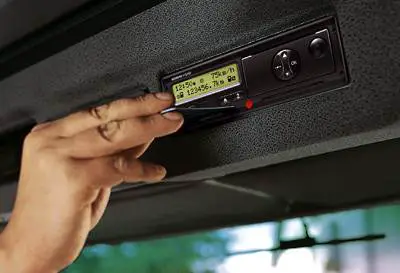 There are a lot of frequently asked questions when it comes to tachograph analysis. If you run a business where your workforce are required to drive, this is a topic you need to be well informed on. This guide will attempt to clear up any confusion and give you an idea on how tachograph analysis software could benefit your operations.
There are a lot of frequently asked questions when it comes to tachograph analysis. If you run a business where your workforce are required to drive, this is a topic you need to be well informed on. This guide will attempt to clear up any confusion and give you an idea on how tachograph analysis software could benefit your operations.
Let’s nail the basics first. Tachographs are devices that are fitted into vehicles to monitor the driver’s speed, distance traveled and time spent behind the wheel. Older vehicles are typically fitted with analogue tachographs, which use a rotating paper disc to record the data. However, these types of tachographs are now being replaced with digital alternatives following the adoption of European Union regulations laid down in 2006.
It has since become mandatory for all vehicles over three and a half tonnes to be fitted with one. Companies like Stoneridge Electronics provide full digital tachograph packages for companies of varying sizes. From tacho paper rolls to driver card readers, you can find everything you need to get set up.
Once a digital tachograph is fitted in the vehicle, all the journey data is recorded to a ‘driver card’ that’s inserted into a card-reading device. All the information that is stored on the card is recovered when the driver hands it back to you periodically. According to EU regulations, this must be done for each worker every 28 days and stored for a year. It is important that you back-up all this data and store it securely. If you’re ever required by a transport authority to show this information, you should have it readily available.
Once the data on a driver’s card is transferred, it can be interpreted using tachograph analysis. You can store and track this information on the web or by using installed computer software. The program is easy to use and is compatible with both digital and analogue tachographs.
Aside from it being the law, why else should you use this type of software? For one, it takes great strides in cutting down unfair practice from competitors. By installing these devices, drivers are less likely to be treated unfairly by being forced to work excessively. Tachographs help level the playing field and are also favored by workers when they have to claim on any work that has gone unpaid.
By adopting these good practices, you can avoid an incident similar to the one that took place at Deveron Coaches, a Macduff-based company. As reported by the Banffshire Journal, an investigation by VOSA revealed that drivers weren’t taking enough breaks from driving during the day.
The software is also excellent for finding areas to improve upon. It gives employers the opportunity to coach and re-train employees if they notice they aren’t taking the most efficient routes whilst on the job. Bad habits such as speeding can be clearly identified and stamped out early.
Perhaps the biggest advantage of this tech is its usefulness in the event of a road accident. The data provided from a tachograph can help determine whether a driver was at fault or did everything in their power to avoid the incident. When paired with eye-witness accounts, the data is incredibly valuable when supporting your drivers and the company.
Image credit: Tachoblog.com

I have heard that some insurance companies are going to start using tachographs and GPS to decide how safe certain drivers are to insure. The changing face of the world!